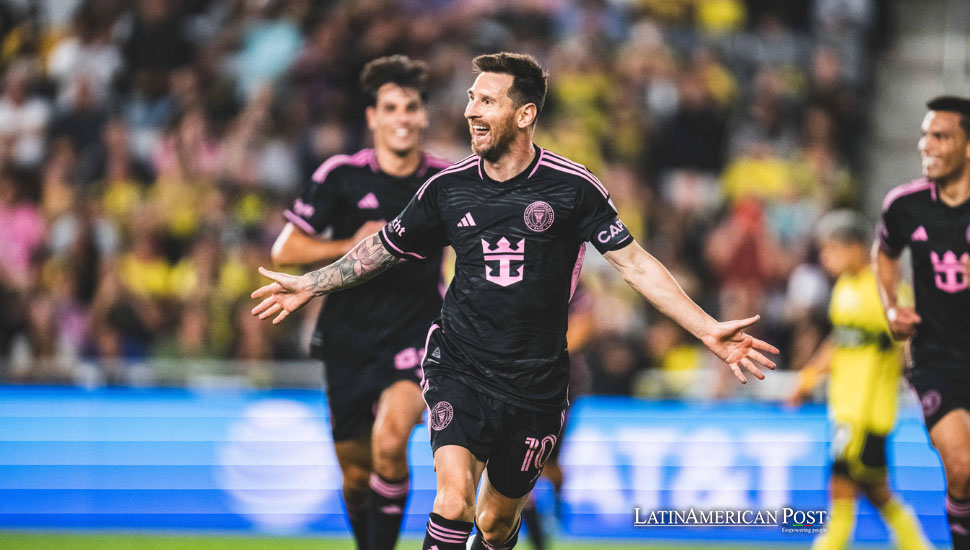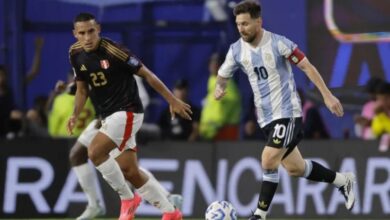Argentina’s Post-Messi Soccer Tactical Shifts and Challenges

As Argentina prepares for a future without Lionel Messi, its tactics evolve to maintain success. The team’s recent matches hint at changes in approach, prioritizing width and directness, but with the challenge of replacing their irreplaceable star.
The Past vs. Argentina’s New Tactical Direction
In the 2024 Copa America final, Argentina emerged victorious over Colombia, securing a 1-0 win. Yet, it wasn’t just the victory that raised eyebrows—it was how Argentina adapted after Lionel Messi was substituted in the 66th minute. Speaking to D Sports, Colombia defender Davinson Sanchez noted that Messi’s exit made Argentina stronger, a surprising revelation for many. “Messi’s exit was key because (Nicolas Gonzalez) came in with a bit more physical endurance,” Sanchez told the outlet. “The game became more balanced. They didn’t dominate us, but it became more even.”
Is it possible that Argentina could play better without Messi, who is often regarded as the greatest player of all time? According to The Athletic, Argentina’s preparation for life without Messi has been in motion for some time, especially as Messi turned 37 this June. Even though he has been recalled for upcoming World Cup qualifiers against Venezuela and Bolivia, Messi’s lack of match fitness due to an ankle sprain in the final against Colombia has kept him sidelined for crucial matches. As a result, Argentina is already beginning to evolve its tactical identity in its absence.
The absence of Messi and Angel Di Maria’s retirement from international soccer created a foreign challenge for the Albiceleste. As Argentina’s head coach, Lionel Scaloni, explained in an interview with Argentine journalist Juan Pablo Varsky, replacing Messi and Di Maria is impossible. “They are irreplaceable players,” Scaloni stated. It’s impossible to replace them. They’re unique players.” This sentiment, reported by The Athletic, underscores the difficulty of transitioning to a team without Messi’s creative genius.
Scaloni’s Shift to Width and Speed
During Messi’s injuries over the past year, Scaloni has emphasized that Argentina’s strength lies in its set tactical identity, not in any individual player. “It’s difficult for any team not to be dependent on Leo,” Scaloni admitted in an interview with Varsky, as quoted in The Athletic. “Any team that he’s on will depend a lot on him. He’s a unique player. It’s logical.”
Yet, Scaloni’s tactical approach doesn’t hinge on a single player. “The strength of this team is that we have a style of play that doesn’t change based on who’s on the field,” he continued. This style revolves around a pressing, versatile midfield that has defined Argentina’s approach since Scaloni took over in 2018. When Messi is absent, the focus shifts to other vital areas, such as width, speed, and directness. The tactical shift was particularly evident in Argentina’s September World Cup qualifiers against Chile and Colombia.
As analyzed by The Athletic, without Messi, Argentina used width to exploit the opposition’s flanks, something they don’t often do when Messi is on the field. Juventus winger Nicolas Gonzalez, one of Scaloni’s trusted players, took Di Maria’s place on the wing. Gonzalez’s pace and physicality were essential in stretching the field, and the team adapted quickly to playing without Messi’s central playmaking.
Against Chile, this shift was apparent. With Messi absent, Argentina looked to quickly transition into the final third using two center-forwards, Julian Alvarez and Lautaro Martinez. Alvarez, the hard-pressing forward, often dropped into midfield to function as a false nine while Martinez worked off his movement. Yet, without Messi’s creative spark, Argentina struggled to break down Chile’s defense, resulting in a lack of chances in the first half.
Argentina’s tactical identity shifted in the second half as they widened the pitch and pressed higher. Alexis Mac Allister, a creative midfielder, began to take on more responsibility. Though Mac Allister was quiet in the first half, he became a crucial player in the second, linking up play and creating chances. His well-worked goal just minutes into the second half sealed Argentina’s 3-0 victory, showcasing the team’s ability to adapt and thrive without Messi.
Key Players and the Burden of Responsibility Without Messi
The absence of Messi places greater responsibility on other players to step up and fill the void. Rodrigo De Paul, the versatile Atletico Madrid midfielder, has emerged as a crucial figure in this new era. De Paul’s ability to defend and attack makes him a key component in Scaloni’s system, especially when Messi is not on the pitch.
De Paul played an expansive role in both the Chile and Colombia matches, often moving into spaces traditionally occupied by Messi. Against Chile, De Paul was involved in all areas of the pitch, pressing relentlessly and providing support in the attacking third. However, despite his tireless effort, there was a lack of creativity in the final third. Set-piece deliveries, often a specialty of Messi, failed to create the same threat when De Paul was tasked with taking over those duties.
Against Colombia, De Paul once again roamed freely, taking up advanced positions near the penalty area. Alongside Mac Allister and Chelsea’s Enzo Fernandez, De Paul helped initiate Argentina’s counter-attacks, but several chances were wasted without Messi’s clinical touch. This burden of responsibility extends beyond De Paul, however.
Paulo Dybala, who was given Messi’s No. 10 shirt during the September qualifiers, has struggled to live up to his immense expectations. While Dybala possesses the technical ability to fill Messi’s shoes, injuries and inconsistency have limited his contributions on the international stage. Meanwhile, Mac Allister, still relatively new to the spotlight, has shown glimpses of brilliance. His goal against Chile is a testament to his potential as a creative engine for Argentina in the future.
Scaloni also tested a new partnership in midfield during the Colombia match, swapping out Mac Allister for Leandro Paredes. Paredes played centrally alongside Fernandez, giving De Paul more freedom to move forward. Yet, despite their best efforts, the team lacked the cutting-edge Messi usually provides and couldn’t capitalize on critical opportunities.
The Post-Messi Era
Despite their second loss in the current World Cup qualifying cycle against Colombia, Argentina remains atop the CONMEBOL qualifying table. The tactical shifts during the September qualifiers provide insight into how the team will evolve in the post-Messi era. Scaloni’s focus on width, directness, and quick transitions will likely become more pronounced as Messi plays fewer games in the coming years.
One of Argentina’s critical challenges will be maintaining its identity as a possession-based team while incorporating a more direct style of play. Argentina often plays a narrow game with Messi, controlling possession and dictating the tempo through their midfield. They become more expansive without him, looking to exploit the wings and quickly transition into the final third.
This tactical evolution, while promising, still requires refinement. For example, in the match against Colombia, Argentina’s two center-forwards—Alvarez and Lautaro Martinez—were asked to press more, drop into midfield, and cover more ground than they typically would with Messi. This extra workload resulted in a less cohesive attacking performance, as Colombia stifled much of Argentina’s forward play.
Scaloni also made critical tactical adjustments in the second half, bringing on attacking fullback Marcos Acuña to create an overload on the left side. Acuña helped create several chances alongside Gonzalez and Martinez, but Argentina struggled to finish. Argentina’s lack of creativity and finishing without Messi remain issues that need to be addressed.
Nevertheless, Argentina’s adaptability under Scaloni is a positive sign for the future. Their ability to control games, press high, and attack with width has helped them remain competitive without Messi. The challenge moving forward will be finding consistency in the final third and developing players like Mac Allister, De Paul, and Dybala into leaders who can carry the team in Messi’s absence.
Argentina’s preparation for life after Lionel Messi is already underway as the team navigates tactical shifts and new responsibilities for key players. Under Lionel Scaloni’s guidance, Argentina is adapting to a style emphasizing width, directness, and pressing, even though they remain committed to their core identity as a possession-based team. The September qualifiers against Chile and Colombia offered a glimpse into this new era, showcasing the potential and challenges ahead.
While Messi’s influence on Argentina’s success is irreplaceable, the team is beginning to find its rhythm without him. Players like Rodrigo De Paul, Alexis Mac Allister, and Nicolas Gonzalez are taking on more significant roles. Still, work remains to be done to refine their approach, particularly in the final third.
Also read: Latin Stars Are Taking Over the Entrepreneurial World
As Argentina continues its World Cup qualifying campaign, it will focus on balancing the tactical identity that has brought them success with the need to adapt in Messi’s absence. The team’s future will depend on how well they can transition into this post-Messi era, keeping the essence of their playing style while embracing the changes needed to stay competitive on the world stage.





